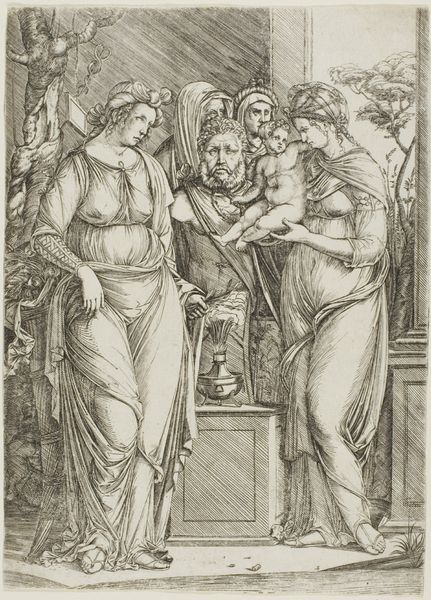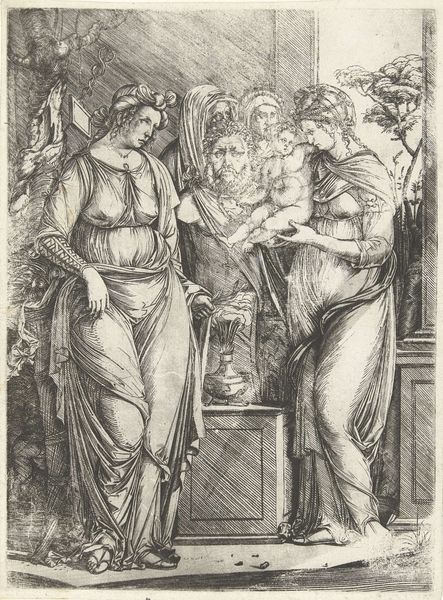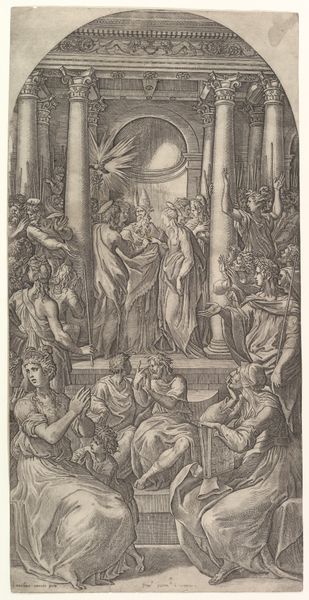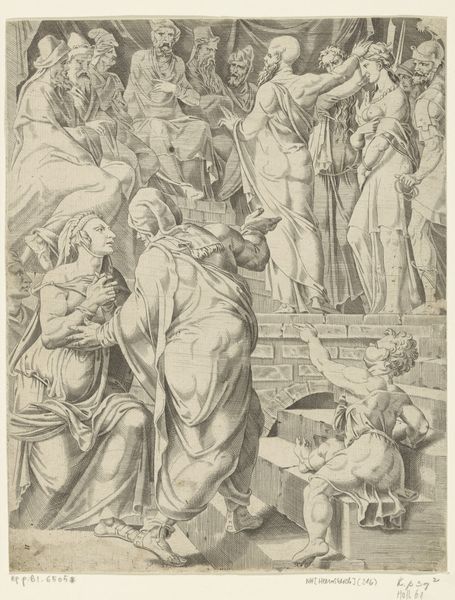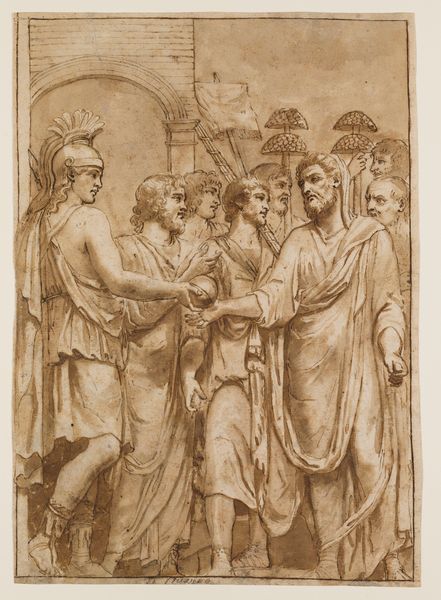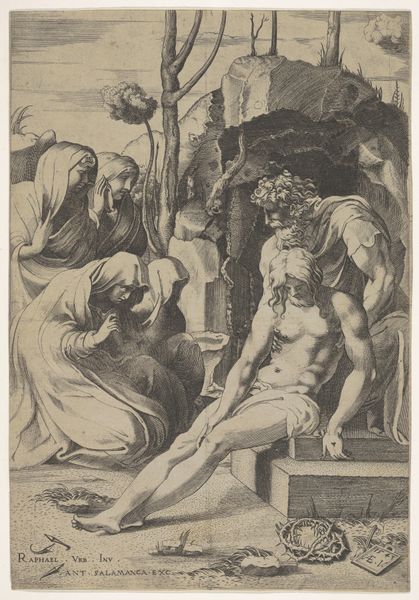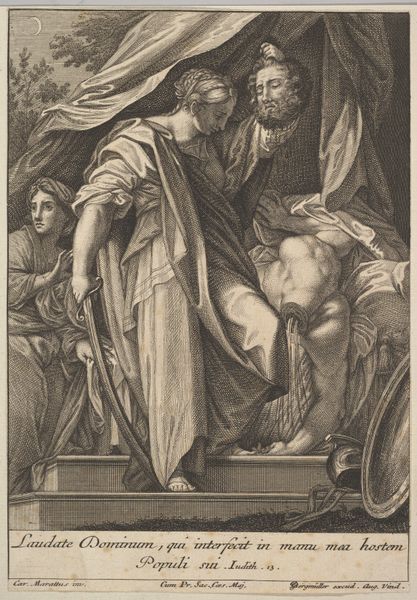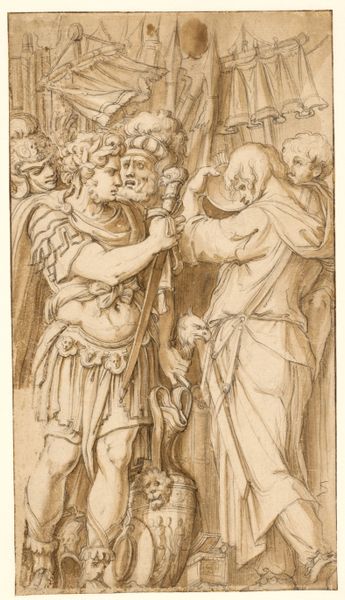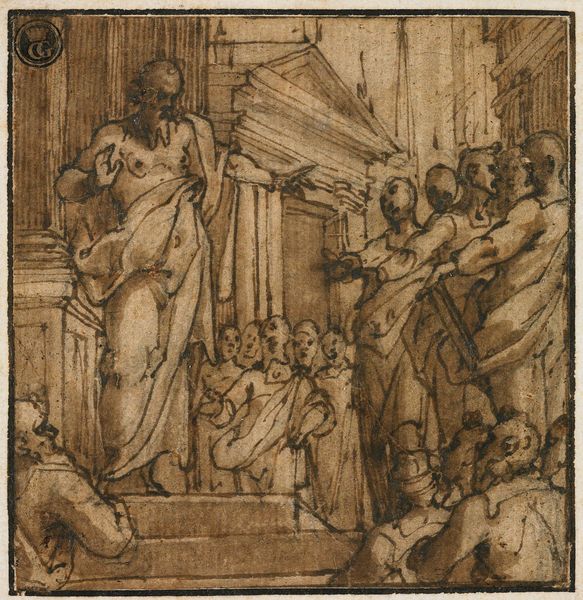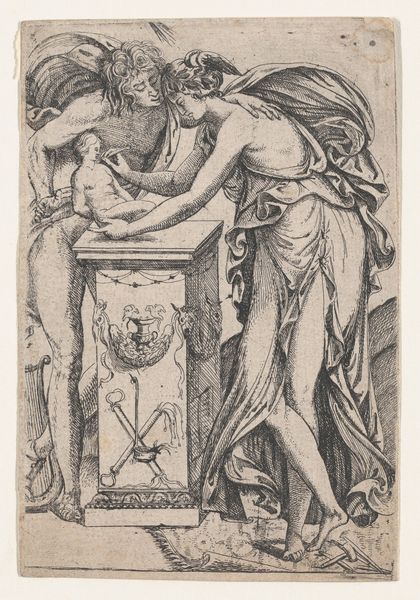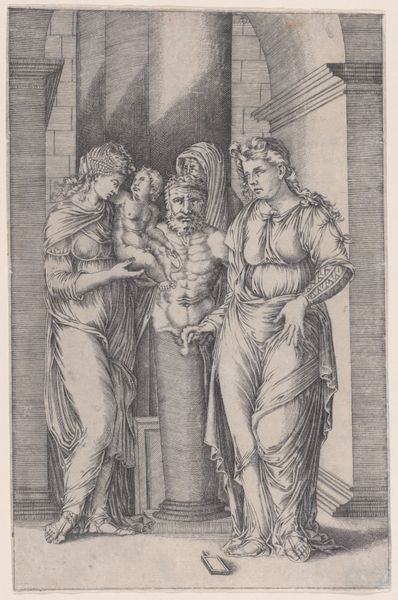
Sacrifice to Priapus- the larger plate c. 1499 - 1501
0:00
0:00
print, engraving
#
portrait
# print
#
figuration
#
line
#
history-painting
#
italian-renaissance
#
engraving
Dimensions: Image Size: 9-1/16 x 6-9/16 in. (23.0 x 16.7 cm)
Copyright: Public Domain
Curator: Here we have "Sacrifice to Priapus- the larger plate" by Jacopo de' Barbari, dating back to around 1499 to 1501. It's an engraving, currently residing here at the Minneapolis Institute of Art. Editor: It’s…striking. The figures almost emerge from the grey background, rendered with such fine lines. They are almost statuesque. Curator: It certainly showcases the burgeoning interest in classical themes during the Italian Renaissance. Notice how Barbari has drawn heavily from ancient sources in his depiction of Priapus, the Greco-Roman god of fertility. And how that plays with notions of power, gender, and the body. Editor: Power dynamics indeed. It makes me consider the physical process; imagine the precise, laborious hand movements needed to create these incredibly detailed lines on the plate. The consumption of images was much slower then, how was the reception different? Curator: It's true that engraving required immense skill and time. These prints weren't mass produced, but how widely distributed were these images within specific social circles, reinforcing the societal norms around fertility, the role of women as maternal figures? It's a question of representation as well as creation. Editor: I keep returning to the stark contrast between light and shadow, especially how the figures stand almost starkly out. One can really sense the physical labor required to produce the copperplate and print. Was de' Barbari himself thinking about the artisan hands when he was creating? Curator: The very nature of printmaking introduces layers of labor: the artist's concept, the engraver's skill, the printer's work. Consider the status of artisans within the Renaissance workshop, who had guild systems influencing production and knowledge transfer. Editor: Yes! So what about this 'Sacrifice', what offering is brought? The print, in and of itself, through materiality, becomes both the object *and* a record. Was the role of de’Barbari similar to a factory owner than conceptual artist, in this sense? Curator: An interesting proposition. We can analyze the print's symbolism, understanding what social rituals were being reproduced and legitimized in 15th-century Italy. But that leads back to thinking about access and power. Editor: Seeing the attention to the textile rendering helps me appreciate not only de' Barbari, but the craftsmen. To think about their skill and work is one approach. Curator: Precisely. Examining this engraving invites us to analyze representation but consider the impact of materials and labor too. Editor: And seeing the confluence of both enriches my appreciation.
Comments
No comments
Be the first to comment and join the conversation on the ultimate creative platform.
